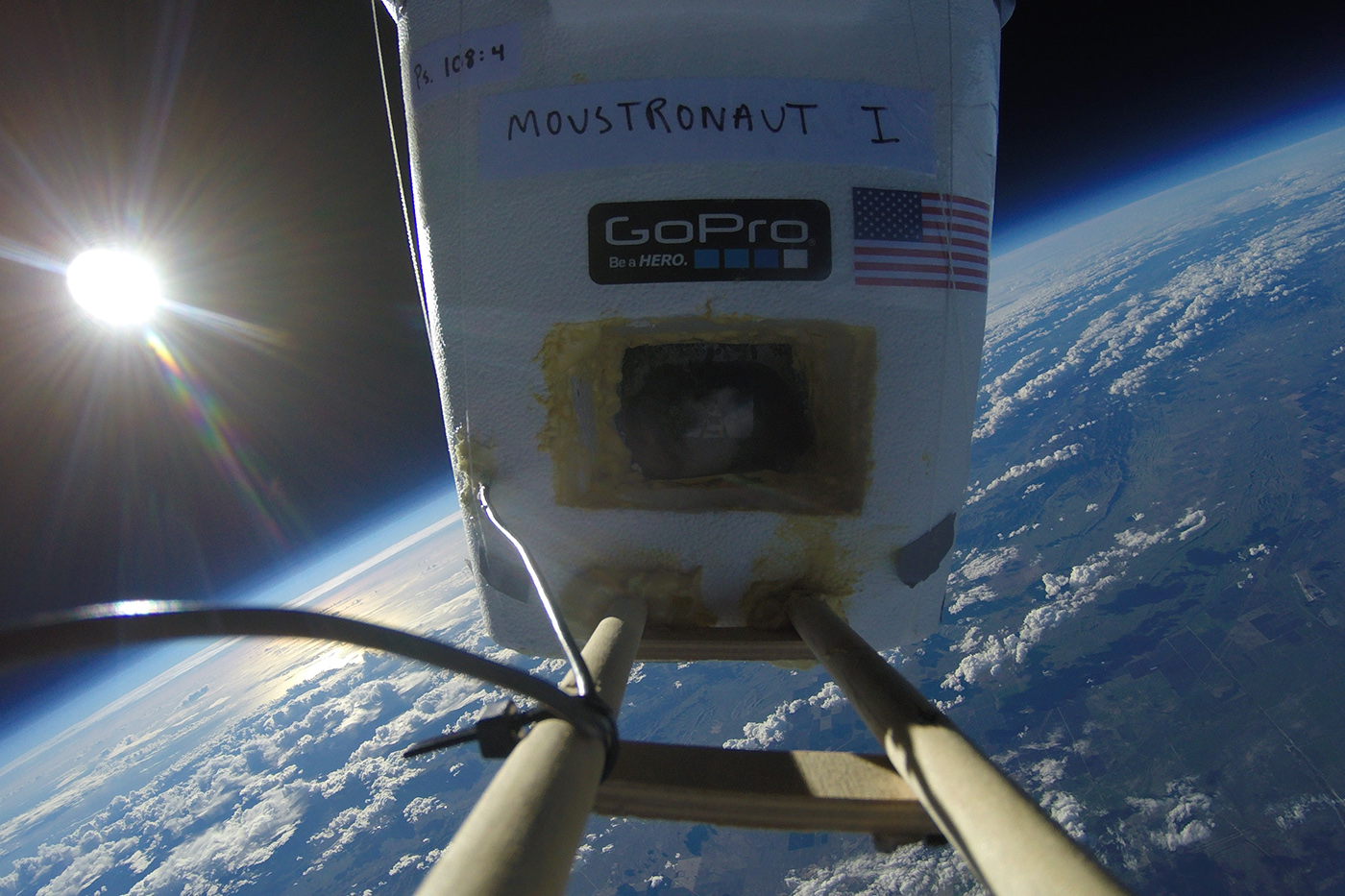Aerospace engineering sophomore Evan Agarwal accomplished a feat more than two years in the making when he sent two mice on a trip to space on Jan. 12. Transported by a weather balloon, the mice ascended to an elevation of more than 111,000 feet, Agarwal estimated.
A weather balloon is made of latex and filled with helium so that it rises to altitudes higher than 100,000 feet. The balloon then bursts and a parachute deploys, safely returning the cargo to earth. The balloons range from five to ten feet and typically cost a few hundred to thousands of dollars.
The mice were housed in a Styrofoam cooler attached to the balloon. A window was fitted to the cooler in hopes of catching images of the mice in space, but the window quickly froze over before the balloon reached its peak altitude.
Agarwal also ensured the mice had enough oxygen supplied for the duration of their journey. Inside the cooler, the mice were placed in a jar padded with hand warmers to combat the frigid conditions of high altitudes.
The balloon returned to the ground just two miles from the launching point. Unfortunately, the mice did not survive their expedition. Agarwal said he suspects the hand warmers did not supply enough warmth and the mice likely died from the cold.
Agarwal first dreamed of this project as a senior in high school, when he watched a video of a Lego figurine sent up into space also using a weather balloon. This inspired Agarwal to try his own hand at the challenge. Taking the task to the next level, he decided to use live mice as the weather balloon’s passengers instead of a nonliving object.
The undertaking required extensive tinkering with the design through trial and error. Agarwal achieved the final model all by himself, without the help of a team or sponsor. Although images of the launch captured by a GoPro camera show the brand’s sticker on the Styrofoam mouse vessel, it was in no way associated with the project. The Styrofoam container also displays an American flag sticker.
In addition to the GoPro camera, the final design was equipped with a GPS to track the balloon’s flight and relocate it once it returned to earth.
Friends and family of Agarwal knew how enthusiastic he was about the project. His biggest supporters were his parents, he said, who financially backed it.
Agarwal said he was thrilled by the images the camera captured. He later shared his success in an Instagram post and thanked his parents for making “Space Mouse” a reality. As of Monday, the post has more than 500 likes and 46 comments.
Agarwal said inspiration and education were his motives for taking on this extensive task.
“I was inspired by somebody else’s project,” Agarwal said. He said he hopes others will see what he accomplished and be inspired too.

